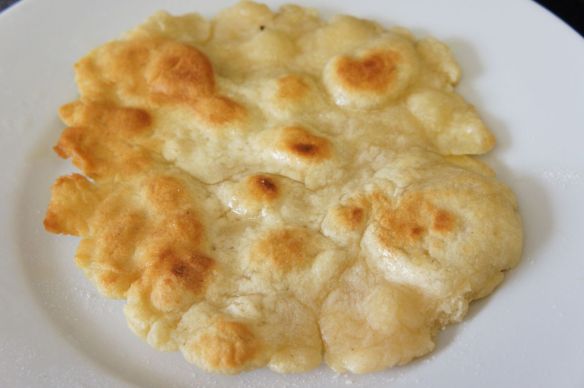
When I decided to designate this week Brazil week, I didn’t know I would end up making something surprisingly akin to Thai curry, only without the burn-your-tongue spiciness or the fish sauce. When I tasted my moqueca de peixe (fish stew), however, it made me realize how much of our world cuisine is interconnected, whether directly, the way Japanese curry probably evolved from curries originating further west in Asia, or indirectly, the way similar ingredients (fish, coconut milk, vegetables) produced similar results in different parts of the world such as Brazil and Thailand.
I should say that real Brazilian moqueca may be a bit different, primarily because I didn’t use any dende (red palm oil). Nor did I search it out, as it’s high in saturated fat, my cupboard space is limited, and I don’t foresee many other uses for it. I used olive oil instead. There is actually another type of Brazilian moqueca, moqueca capixaba, from the state of Espirito Santo, that uses olive oil instead of dende. That dish, however, doesn’t use coconut milk, so mine is a bit of a hybrid. That’s OK with me. My life and family are about hybridization, and as any gardener knows, hybrids are often the hardiest.
As I was researching moqueca de peixe, I found a huge range of recipes online, some very similar and some a bit different. I ended up not following any particular recipe but using what I thought would be tasty, based on the most common themes in moqueca recipes. Here’s my version. It’s easy, quick and gets even better after having sat for a day. Continue reading →
 Cullen skink. It sounds like a particularly unpleasant sort of lizard. But actually, it’s a delicious Scottish soup, hearty enough for a one-pot meal, quick and easy enough for weeknight supper when your kid has swimming lessons after school and you’re going to a PTA meeting after dinner.
Cullen skink. It sounds like a particularly unpleasant sort of lizard. But actually, it’s a delicious Scottish soup, hearty enough for a one-pot meal, quick and easy enough for weeknight supper when your kid has swimming lessons after school and you’re going to a PTA meeting after dinner.



 A friend of mine recently shared a recipe for flourless banana pancakes and I was so excited, I immediately tried it out. The recipe called only for one mashed banana and two eggs, mixed together and fried like a pancake. It did work, rather to my amazement, and my kids loved them, but the resulting “pancakes” were very light, difficult to flip, and not really pancakey enough for me.
A friend of mine recently shared a recipe for flourless banana pancakes and I was so excited, I immediately tried it out. The recipe called only for one mashed banana and two eggs, mixed together and fried like a pancake. It did work, rather to my amazement, and my kids loved them, but the resulting “pancakes” were very light, difficult to flip, and not really pancakey enough for me.



